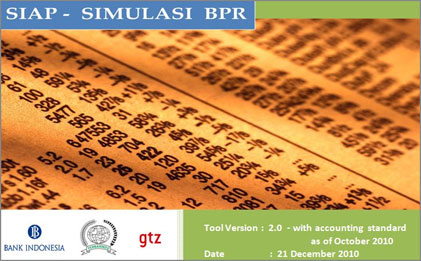|

|
In September
2009 GTZ acquainted BPRs with an MS Excel based quantitative management
tool (SIAP). This tool allows analysing the bank’s current weaknesses and
strengths, simulating the impact of an adjusted business strategy,
pricing loans and comparing the resulting indicators for efficiency and
outreach against competing market participants. Courses on concepts and
applications of SIAP are taught by the local Perbarindo chapters.
One of the key
concepts consists in the classification of the BPR’s loan portfolio into risk and costs based product classes that are now standardized across Indonesia:
|
|
Loans are distinguished
according to seize ranges of
the initial principle and regarding non group loans according to the way the client
creates cash flows for payment, e.g. via a business or a salary.
In October 2010
BI incorporated these and other new loan characteristics into the
enhanced monthly requested loan report. This allowed Dr. Birgit Galemann,
who developed SIAP in the name of ProFI, to derive the standardized
product classes directly from this official report.
The user-friendliness of the tool is
therefore greatly increased: At a push of a button now BPR management
inputs the official loan report whereupon the whole portfolio is sliced
and diced into the standardized risk and costs based product classes
together with their associated
·
average interest rates, quoted as “flat” and
“non-flat”
·
average original loan term
·
average loan size
·
outstanding amount and
·
number of loans, also distinguished by quality
|
The average interest rates charged provide
one indicator for the degree of the BPR’s competitiveness. Other
competitiveness as well as efficiency and outreach indicators for the current state of the BPR are
displayed in SIAP as soon as the official
balance sheet and profit & loss report plus a few additional
parameters have been inserted into the tool.
In this way from
now on a BPR’s competitiveness, efficiency and outreach can easily be
compared across the industry.
In an increasingly competitive market some
BPRs will be forced to lower interest rates over time. If this is
achievable without making a loss can be read off the projected indicators after the interest rates and may be
other current parameters in SIAP have been adjusted.
|